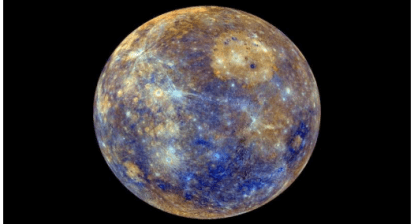The Sun emitted a significant solar flare on March 30, 2022, peaking at 1:35 p.m. EST. NASA’s Solar Dynamics Observatory, which watches the Sun constantly, captured imagery of the event.
Solar flares are powerful bursts of energy. Flares and solar eruptions can impact radio communications, electric power grids, navigation signals, and pose risks to spacecraft and astronauts. They can last from minutes to hours.

An X1.3 class solar flare flashes in center of the Sun on Mar. 30, 2022. This image was captured by NASA’s Solar Dynamics Observatory and shows a blend of light from the 171 and 131 angstrom wavelengths. Credit: NASA/GSFC/SDO

NASAs Solar Dynamics Observatory captured this image of a solar flare as seen in the bright flash in the top right portion of the image March 30 2022. Credit NASA/SDO

An X1.3 class solar flare flashes in center of the Sun on Mar. 30, 2022. This image was captured by NASA’s Solar Dynamics Observatory and shows light in the 131 angstrom wavelength. Credit: NASA/GSFC/SDO
This flare is classified as an X-Class flare. X-class denotes the most intense flares, while the number provides more information about its strength. An X2 is twice as intense as an X1, an X3 is three times as intense, etc.
According to NOAA: “Solar flares usually take place in active regions, which are areas on the Sun marked by the presence of strong magnetic fields; typically associated with sunspot groups. As these magnetic fields evolve, they can reach a point of instability and release energy in a variety of forms. These include electromagnetic radiation, which are observed as solar flares.”
More information can be found here.







